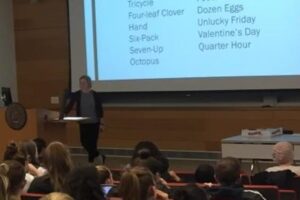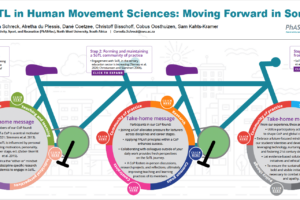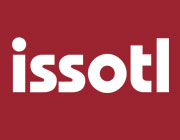Rationale for Proposed Changes in ISSoTL’s Bylaws
- Posted by ISSOTL Admin
- Categories Blog
- Date April 7, 2014
- Comments 0 comment
Posted by Dan Bernstein, Past President and Chair of the Leadership and Elections Committee, on behalf of the Board of Directors who have voted to present the revised set of bylaws for approval by the Society’s membership
The ISSoTL Board of Directors has been operating under its initial bylaws for nearly ten years, and no major problems have emerged that require any radical reformation of the Society. The members of the Board have observed, however, that the distribution of time and effort on the Society’s business has not always matched the structure of the committees stated in the bylaws, and realignment of those committees provided the occasion for a reconsideration of the entire document. In some cases there was ambiguity about a function and in some cases the bylaws were silent on matters of procedure. None of the proposed changes will alter the purpose of the Society; these proposed changes merely bring the document in line with the activities of the board. Perhaps the most dramatic proposal is that we add more volunteers to the board as the tasks taken on have increased and additional help and skill would be welcomed.
We hope that members will take the time to read the new version of the bylaws and offer any comments or suggestions before the proposed changes are put to a vote. There are two versions of the document available to look at. One is the finished document, with all the proposed changes in place. The other is a working draft with all additions in green and deletions stricken out and in red; if you wish to see how the document differs from the previous version, the document with changes and comments can be your guide to reading the new bylaws.
Guide to the bylaws revision
There are three broad areas of amendments offered for consideration. One set of amendments have to do with the composition of the Board of Directors and the terms of office. A second set are a restructuring of the standing committees, dividing the responsibilities differently, specifying some aspects of the membership of the committees, and adding some new committees. The final set of changes are housekeeping changes that clarify or update details in the bylaws but do not offer a substantial change in the way the Society functions. The rationale for each part of the changes is described below.
Members of the Board and Responsibilities of the Officers
- Delete Vision and Planning committee as this should be the business of the whole Board; thinking about the future of the Society is the proper business of the whole board, and the three Presidential officers can guide this conversation by working with specific committees.
- Conferences and Convenings committee is expanded to take on more central leadership of the annual Conference; this group will form specific sub-committees that can carry forward institutional memory about planning conferences. It has been a drain on the time resources of the board to re-train each new set of hosts; the committee’s time can be better spend on shaping the goals of the conference rather than negotiating basic conference logistics with a new team every year.
- Divide Membership and Communications into two separate committees because each is a very large responsibility and has different skillsets needed for the roles
– Membership is a critical task for building our data base and collecting dues and registration funds; we also need to provide the Society with our own data as needed, and the external conference registration systems did not allow us timely access to our own membership information
– Communications identifies and supervises the Communications Coordinator; works with Coordinator and Membership to produce optimal interactivity within the website; provides strategic planning on goals for the web presence of the Society and further development of interaction among members
- Rename and repurpose Going Public into two separable functions each of which is needed
– Advocacy Committee has been functioning since Hamilton, has a clear role that is an important form of going public but not in the sense of a journal; this committee will guide Society interactions with communities outside the membership
– We created an ad hoc Publications Advisory Committee to explore our options for scholarly communications and situating the journal for optimal distribution; it advises the Board on decisions about publication strategies, including detailed research and recommendations. This amendment would make that committee a standing committee. It would not be an oversight committee for the work of the journal itself; rather it would advise the board on how to distribute our scholarship in the most effective ways possible.
- Budget and Finance, to advise the board on financial planning and budget oversight. This has become a large task over and above the day-to-day work of the Treasurer in paying the bills and tracking our accounts.
– Provide oversight and redundancy with the Treasurer; those functions were previously served by Treasurer’s university, but we have moved to having our own bank account those oversight features are no longer provided automatically.
– Consult with Conferences and Convenings and with Publications on how well the plans are fitting into the overall financial condition of the Society
- Increases Board size to 15 (from 13)
- Sets two VPs from each Region in order to add energy, skill, and volunteer time to the work of the Board and of the Committees and to create a succession planning model (terms will overlap)
- Adds two student representatives as full members of the Board to reflect the growing importance of student participation in SoTL and in the Society’s meetings and future
- These items clarify the terms of office, the criterion for election, term length, re-election eligibility, and stagger of terms
– The bylaws have been silent on how to handle an election with more than two candidates; this version requires a majority vote in a runoff election between the top two vote recipients.
– Vacancies section was moved to follow the position descriptions; the current version has two different policies for replacing a President, and this version picks the Past President. The Past President has experience and can fill in without adding to the total duration of service.
- Some responsibilities for Board functions have been moved around based on what we have learned by doing
Communications coordinator position has been defined more precisely to keep the description in line with a new and more active website. Also makes clear that this position is not a board member, and that is also true of the journal editors, who were not anticipated as board members in the original. Editors and Coordinator can attend meetings as needed, but all are appointed by the Board and should not be voting members
Housekeeping
- Jen Robinson has agreed to continue as “resident agent” (only board action required)
- Membership year set to coincide with the conference (only board action required)
- The election process is identified as a voting meeting by proxy and specifies officers along with Board members (same as original, just clarified in language)
- Clarification of business meeting and proxy/institutional/organizational voting
- Explicitly allows board business conducted by virtual meeting and electronic voting/consent
- Board may re-order and rename sections of the bylaws without vote by Members
- Board may redefine or change standing committee structure without vote
You will find the proposed new bylaws under ‘governance’, ‘Bylaws and policy statements’ at http://www.issotl.com/governance-2/bylaws-policy-statements/




